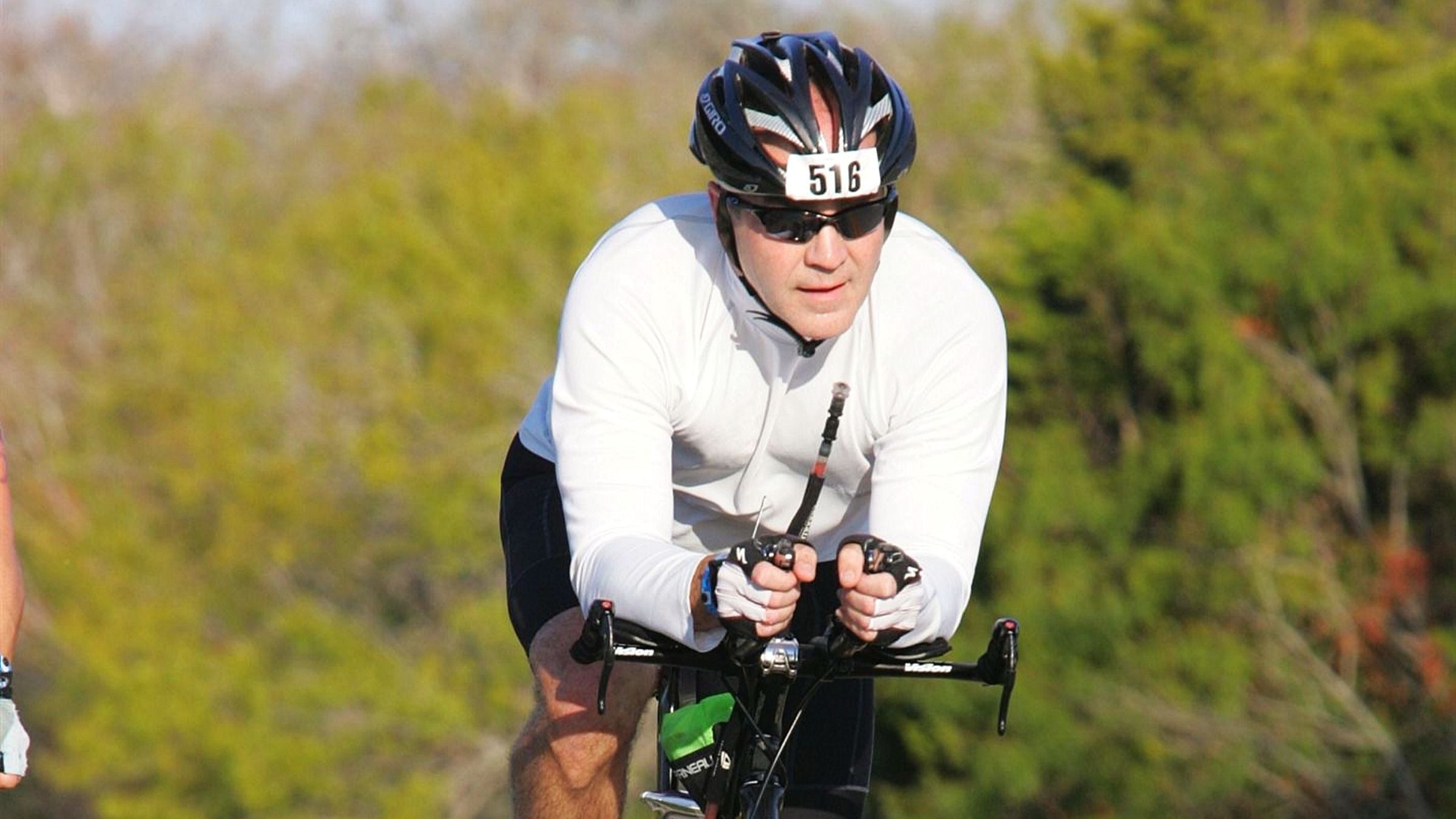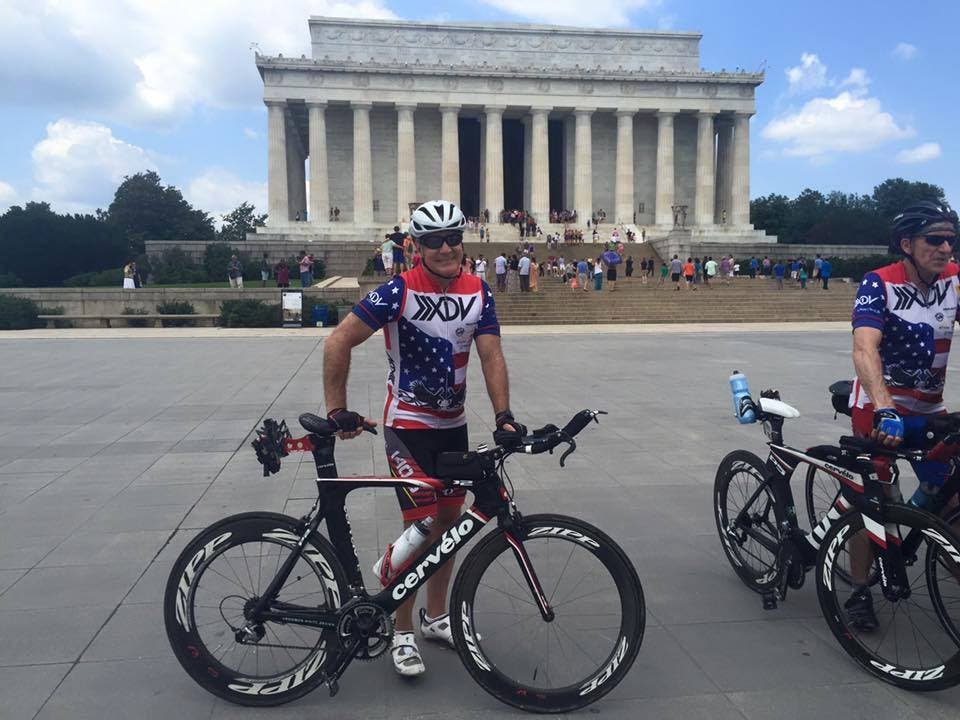#MyTri: I Race to Give Life to Others

(Photo: Courtesy of Tom O'Driscoll)
In #MyTri, we let triathletes share their own stories. Submit your story and photo for consideration by emailing us at letters@triathlete.com with “My Tri” in the subject line. If we choose your story for publication we’ll be in touch.
Fitness has always been a priority in my life. I was a high school letterman in swimming and did numerous intramural sports as a cadet at West Point, having been on both our winning triathlon and boxing teams before graduating in 1986. Maintaining that lifestyle after my two donations remains incredibly important to me.
Prior to my first Ironman at age 48, I was primarily a runner and did about 26 marathons. I began my triathlete journey when I joined a new gym and started to train with a group of other triathletes I had met there, many of whom are still training partners and great friends of mine today. I have done all my ten Ironman races with only one kidney, and I completed my tenth less than nine months after my liver donation surgery. It’s my goal to show everyone that saving a life by becoming a living organ donor in no way limits one’s health or fitness.
On July 13, 2010, I donated my left kidney to a stranger. I learned about altruistic kidney donation from an episode of NPR’s “This American Life” that featured a woman who donated her kidney to a stranger; her story touched me deeply. Shortly thereafter while on a run, I was thinking about why I spend so much time exercising. It occurred to me that perhaps the reason I keep my body healthy is so that it can help another body in need. I resolved then and there to become a living kidney donor. My surgery took place at Cedars Sinai Hospital in Los Angeles – where my recipient lived – and was a successful operation for both of us. After the donation, I was able to return to running in less than a month. I remember being in pain and feeling miserable. I was moping around at home and finally said, “Screw it. I’m going running.” That seemed to be just what the doctor ordered, because I started to feel like myself again; just 6 months later I ran a sub-four-hour marathon!

Most people have more than double the needed blood-filtering capacity with two kidneys, so having one is no issue. The way I see it, God gave us two kidneys – one to keep and one to share! As many as one in 1,000 people are born with one kidney and can lead totally normal lives.
About two years ago, I saw an article that discussed living liver donation. I learned that the human liver regenerates, and one could safely donate a portion of their liver to save a life. I decided that it was something I wanted to do when the time was right. ‘Double donors’ are a rare group, and according to United Network for Organ Sharing, just 133 people in the U.S. have gifted their organs to two separate people while still alive. I contacted USC-Keck, one of the top liver transplant hospitals in the country, completed their online donor form, traveled to L.A. for two days of tests and had the surgery in February 2022. I am grateful to have had the ability to give the gift of life by becoming a double donor.
My recovery time was a full two months, and I was told that I could do absolutely nothing but walk during that time. Two weeks after surgery, I was walking four to six miles a day and by the time two months came, I was excited to be able to swim, bike and run again. After one donates a portion of their liver (in my case 60%), their liver function returns to normal in two to four weeks, and their liver slowly regrows to nearly its full original volume in about two months. The human body is simply amazing!
Would I suggest that others become living organ donors? Indeed! As of 2021, living donors now account for over 15 percent of transplantable organs, making possible a substantial proportion of kidney transplants and a growing number of liver and uterine transplants. In 2022, the United States hit a milestone of 1 million organ transplants, but the need for more donors is still great. There are currently about 90,000 Americans on the national registry waiting for new kidneys. Dialysis keeps these people alive, but it is brutally tough on their bodies and takes up the majority of their day. The average life expectancy on dialysis is five to ten years. Conversely, only about 11,000 Americans are waiting for liver transplants because there is no bridge to transplantation. Once a liver stops functioning, a person dies.
My Catholic faith tells me that all life is precious and has infinite value. The Talmud says that whoever saves one life saves the entire world. It has been the greatest privilege of my life to help save two lives by being a living organ donor. Now, I’d like to be an advocate for living organ donations, particularly in the triathlon community. All you need to donate an organ and save a life is to be healthy and willing to give some time – and triathletes are among the healthiest people in society!
If you have an interest in becoming an organ donor, sign up on registerme.org. I can honestly say that it has been one of the most rewarding experiences of my life.